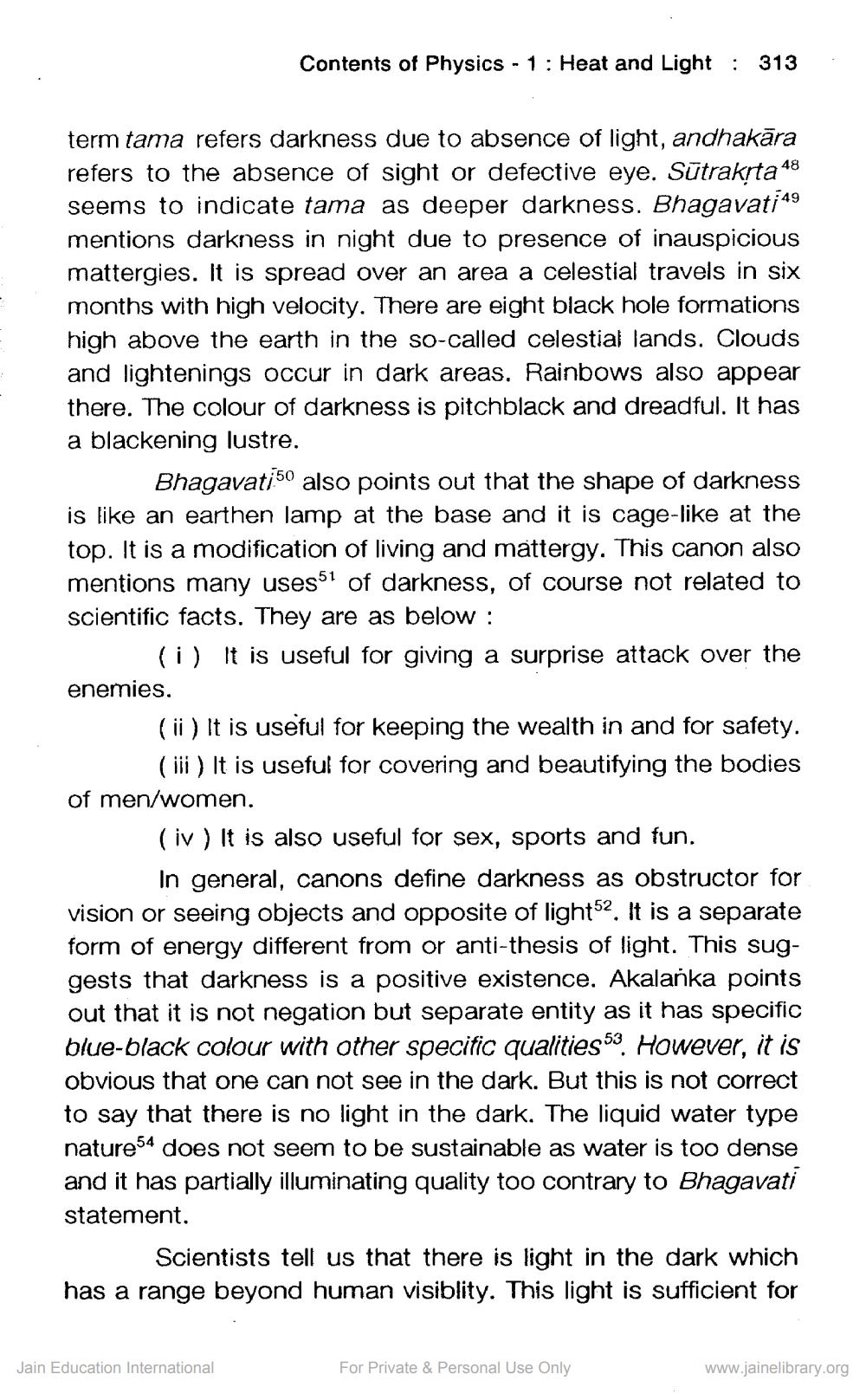________________
Contents of Physics - 1 : Heat and Light : 313
term tama refers darkness due to absence of light, andhakāra refers to the absence of sight or defective eye. Sūtrakrta 48 seems to indicate tama as deeper darkness. Bhagavati 49 mentions darkness in night due to presence of inauspicious mattergies. It is spread over an area a celestial travels in six months with high velocity. There are eight black hole formations high above the earth in the so-called celestial lands. Clouds and lightenings occur in dark areas. Rainbows also appear there. The colour of darkness is pitchblack and dreadful. It has a blackening lustre.
Bhagavati 50 also points out that the shape of darkness is like an earthen lamp at the base and it is cage-like at the top. It is a modification of living and mattergy. This canon also mentions many uses51 of darkness, of course not related to scientific facts. They are as below:
(i) It is useful for giving a surprise attack over the enemies.
(ii) It is useful for keeping the wealth in and for safety.
(iii) It is useful for covering and beautifying the bodies of men/women.
(iv) It is also useful for sex, sports and fun.
In general, canons define darkness as obstructor for vision or seeing objects and opposite of light52. It is a separate form of energy different from or anti-thesis of light. This suggests that darkness is a positive existence. Akalanka points out that it is not negation but separate entity as it has specific blue-black colour with other specific qualities 53. However, it is obvious that one can not see in the dark. But this is not correct to say that there is no light in the dark. The liquid water type nature54 does not seem to be sustainable as water is too dense and it has partially illuminating quality too contrary to Bhagavati statement.
Scientists tell us that there is light in the dark which has a range beyond human visiblity. This light is sufficient for
Jain Education International
For Private & Personal Use Only
www.jainelibrary.org




